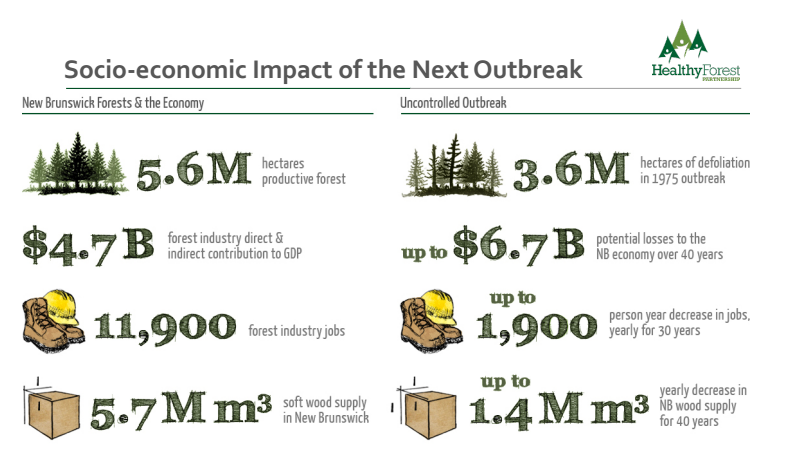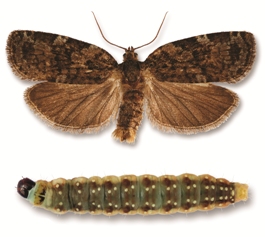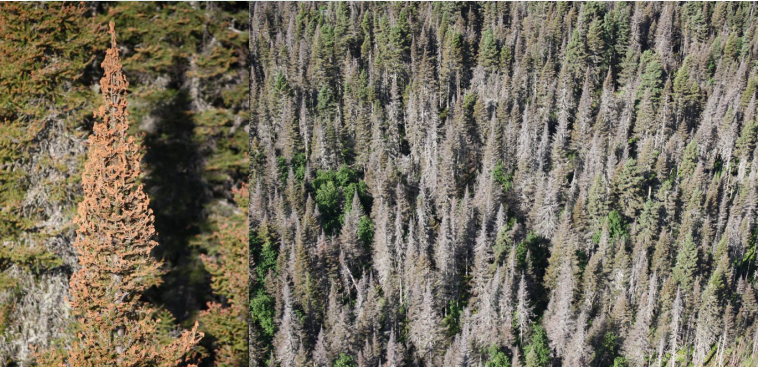New Brunswick Spruce Budworm research proving to be a success
The spruce budworm is slowly moving into the New Brunswick. This budworm is referred to as “the most destructive and widely distributed forest defoliator in North America,” by the Government of Manitoba. However, the spruce budworm is only beginning to spread in New Brunswick and a team of industry professionals has been assembled to combat the pesky defoliator.
Deforestation caused by the spread of the budworm presents a serious problem to all New Brunswickers. The forest is an integral part of life in the province. Many rely on N.B. forests for recreation and to help drive the economy. It’s for these reasons that a team comprised of 13 organizations and spearheaded by seven lead scientists has come together as the Healthy Forest Partnership in 2014, to prevent New Brunswick forests from suffering the losses similar to those experienced in the neighbouring province of Quebec. Their research has led to several breakthroughs in the fights against the budworm.
These images highlight the rapid spread of spruce budworm defoliation.

Dr. David MacLean of UNB, speaking on Spruce Budworm intervention. Photo: Forest NB
Dr. David MacLean of the University of New Brunswick, is one of the lead scientists helping to identify and deal with budworm hotspots in N.B.
MacLean spoke with a room of 60 forest industry professionals at the Forest NB Annual General Meeting in early March, 2016. “The rational for (the Healthy Forest Partnership) is we’ve looked at outbreaks that we’ve had in the past and the effect on timber supply and the direct and indirect effects on the economy, we estimate that there is a $10-15 billion risk over 30 years,” said MacLean.
New Brunswick experienced spruce budworm outbreaks back in 1975 and 1956. Should another infestation occur, the Healthy Forest Partnership has estimated that an uncontrolled outbreak could result in 3.4 million hectares of defoliation in New Brunswick.

Photo: Healthy Forest Partnership

Photo: Government of Canada
“(The preventative measures) entail a lot of upfront work,” said MacLean. “It’s intensive monitoring and early detection of hotspots. It’s also target specific pesticide application of those hotspots instead of area wide once we are in the midst of an outbreak.”
MacLean said another focus of the work being done is using tools and techniques to determine migratory patterns and processes of moths that lay spruce budworms and how influential they are in causing hotspots to prevent infestation or epidemic level outbreaks. The team also looks to find better techniques to disturb the mating processes of the moths .
- Photo: Healthy Forest Partnership
- Photo: Healthy Forest Partnership
Since starting the study MacLean says the Healthy Forest Partnership has decided on an early intervention threshold of seven larvae per branch, performed successful trails with Bt and Mimic pheromones to reduce number of larvae, created a more effective pheromone blend and used a hyperspectral scanner to detect very low level defoliation increasing awareness of where spruce budworm hotspot could pop up.
The research has even led to the creation of of barcoding DNA tool to better understand the individual parasitoids and developed a new tool to identify between local and immigrant spruce budworm moths.
“Overall, It’s so far so good,” said MacLean suggesting that folks continue to monitor http://www.healthyforestpartnership.ca/ for more information and updates.
Media Contacts:
Mike Legere
Executive Director, Forest NB
(506) 452-6939
mlegere@forestnb.com
Shirley Pegler
Manager Regional Communications, Atlantic Region, Natural Resources Canada
(506) 451-2616
Shirley.Pegler@canada.ca





